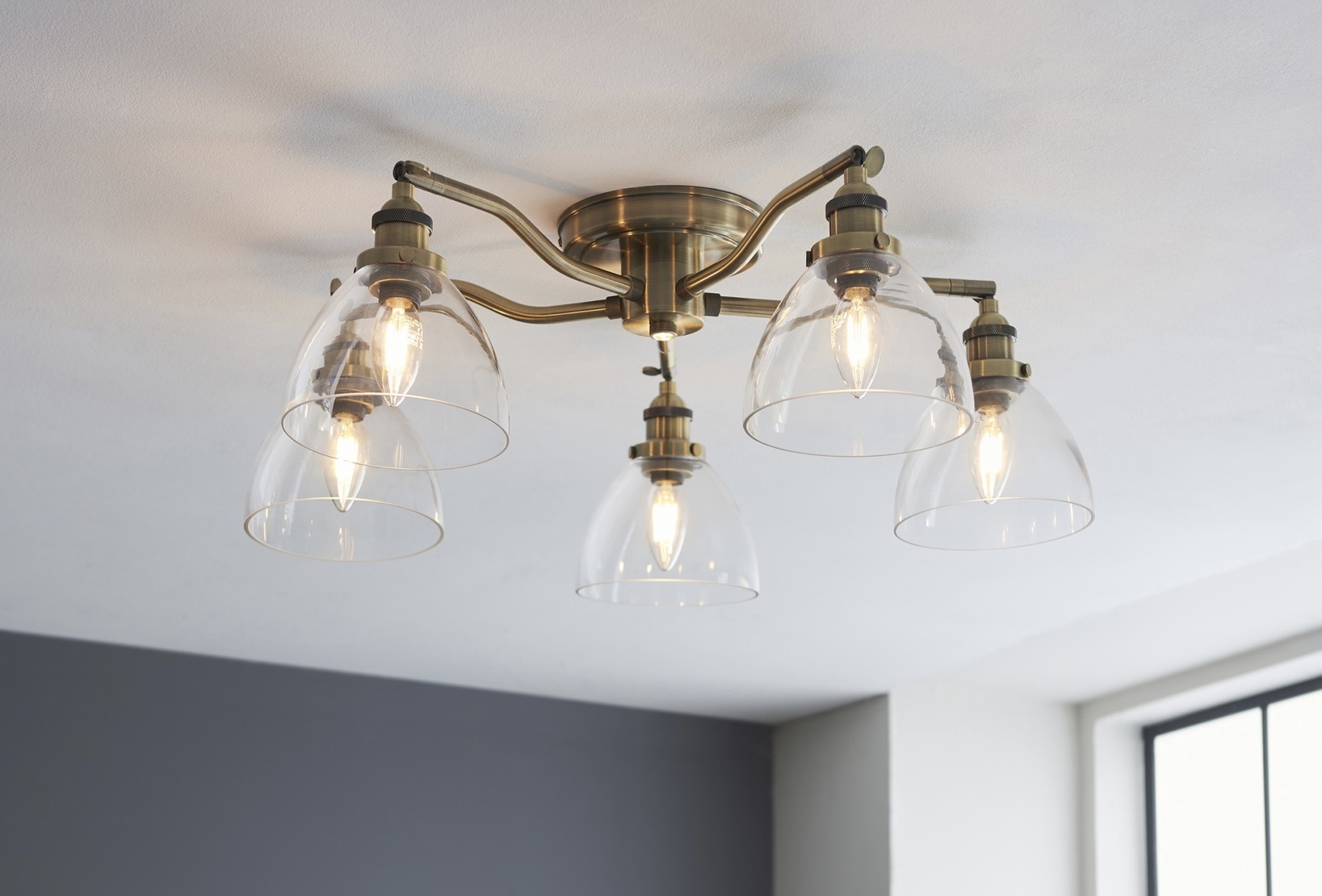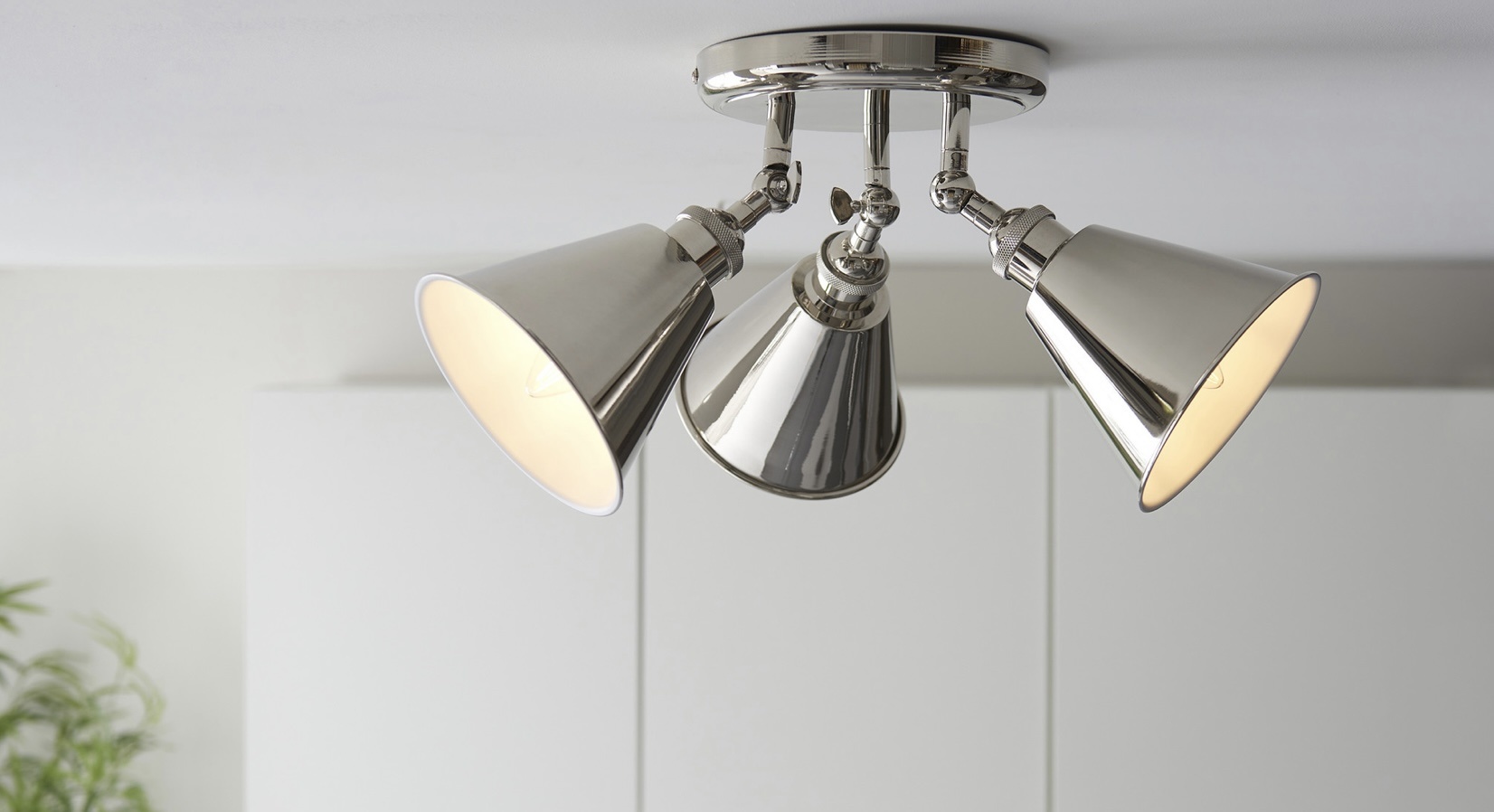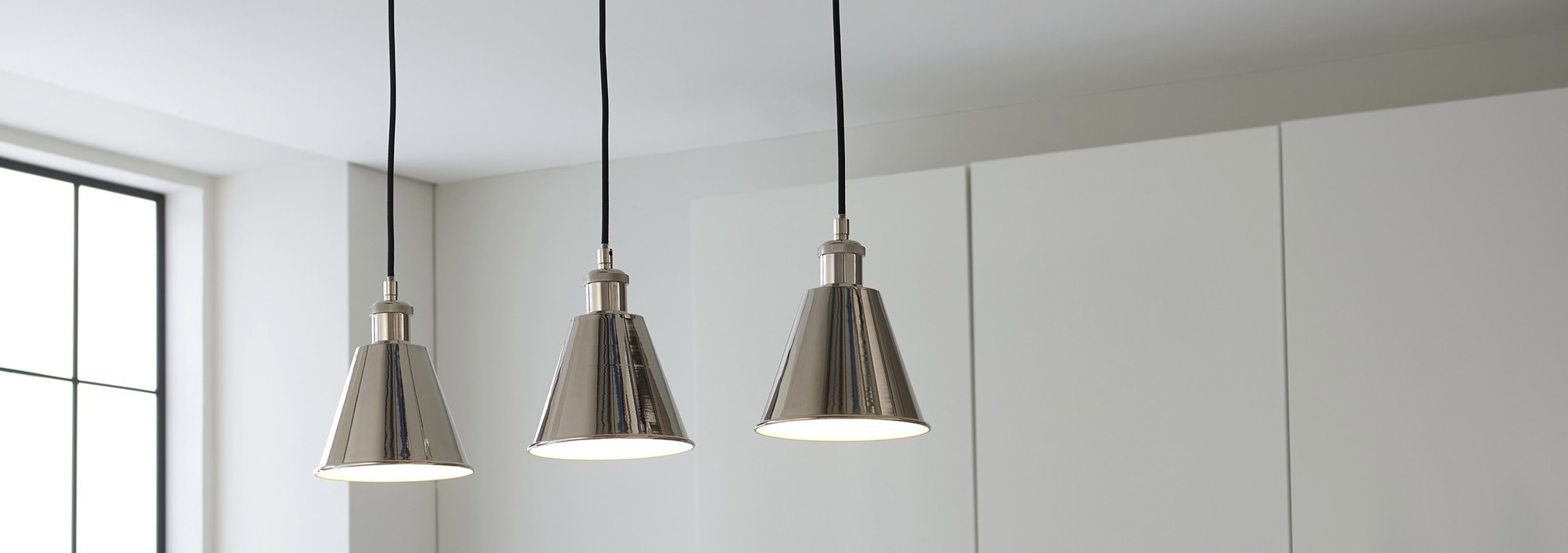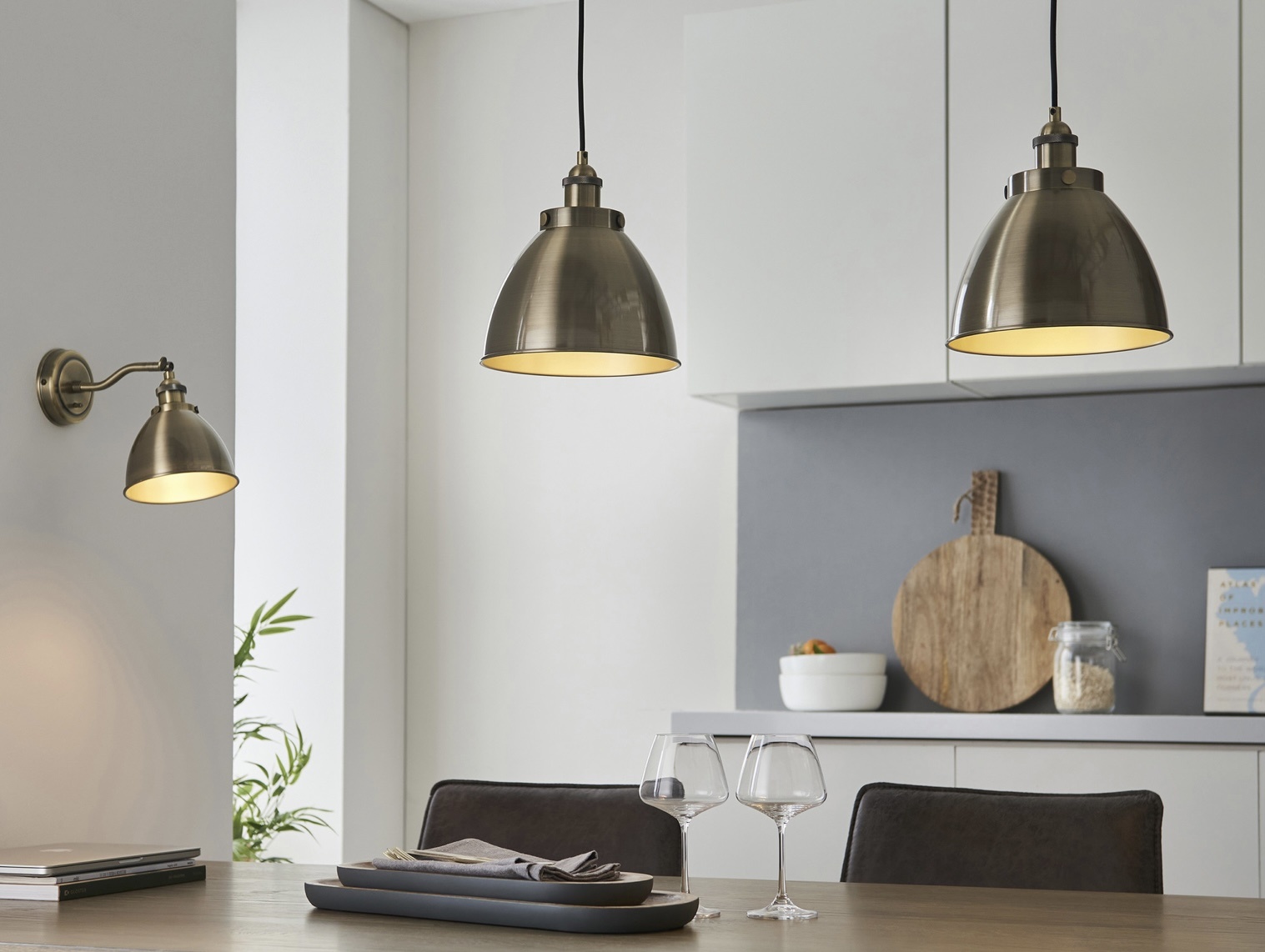Lighting Guides: The Kitchen
- Posted on
- By Jack Inston
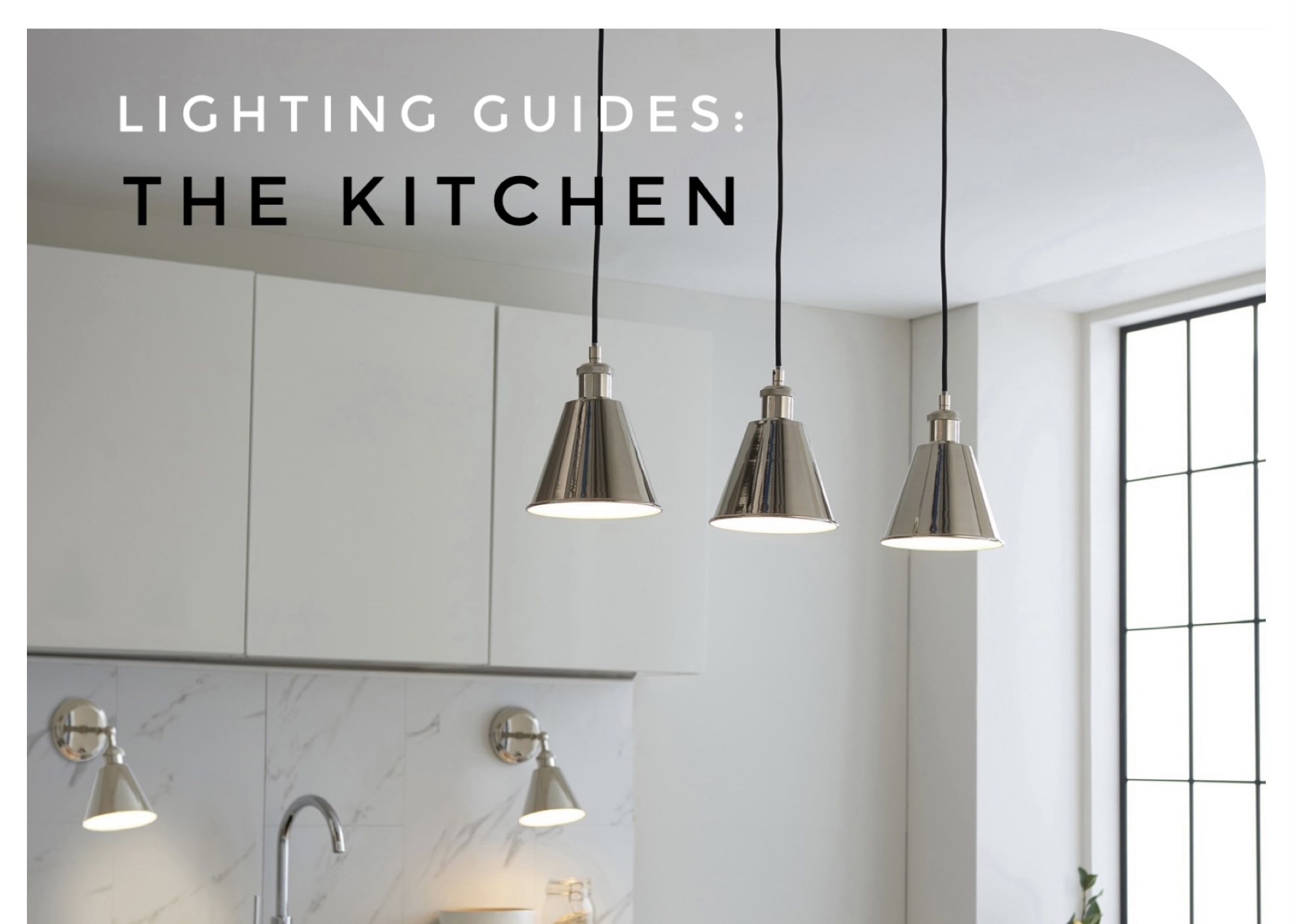
7 min read
Follow these 3 lighting principles to correctly light your kitchen, creating both a practical workspace and an atmospheric hosting hub of the home.
Kitchen Lighting Principle 1 :
Use a Mix of Lighting Types.
This is probably THE most important point to prioritise when shopping for kitchen lighting.
Unlike other areas of the home, one light does not fit all purposes in the kitchen, so layering multiple lighting fixtures is crucial.
You must also consider the function of the space and the time it is most used:
Typically, the modern domestic kitchen will be vacant during the day but a busy, bright workspace in the morning and early evening before turning into a softly-lit ‘social space’ later into the night.
To accommodate these different uses, try to include at least one light fixture (whether that be ceiling, table, wall or floor lighting) for each of the following layers of light;
- ‘Task’ Lighting
- ‘General/Ambient’ Lighting
- ‘Accent’ Lighting
(see the definitions at the bottom of this article).
Finally, also consider the layout of the kitchen - Do you have a kitchen island to hang pendants over? A kitchen or dining table for a feature ceiling light? Or a corner with a plug-socket for a table or floor lamp?
These considerations are the starting point for thinking about your lighting layers in the kitchen but more often than not, the use of multiple fixtures may be dictated by existing wiring in the room.
So, to help you work with what you’ve got, we’ve listed a number of likely scenarios below and provided the combination of light fixtures we would recommend shopping for:
SCENARIO 1 - You have a kitchen with a low ceiling, one central ceiling light and under-unit lighting
Lighting Solution: Great news! Your layer of ‘task’ lighting is already largely taken care of with your under-unit lighting so we would recommend taking the opportunity to shop for a feature ceiling light. However, given the rooms low ceiling height, this will have to be semi-flush mounted.
Fortunately, due to modern, new-build house sizes (which generally have relatively low ceiling heights) there are 100s of stylish, unusual feature lights designed specifically for the average to low ceiling rooms.
Final Tip: Shop for a dimmable semi-flush feature light to give you maximum flexibility as you use the space throughout the day.
> SHOP SEMI-FLUSH & LOW CEILING FEATURE LIGHTING <
SCENARIO 2 - You have a kitchen with a low ceiling, one central ceiling light and no under-unit lighting
Lighting Solution: As the only source of light in your kitchen space, the light output of the fixture you choose becomes very important here.
The light fixture has to be the main source of practical ‘task’ light whilst also giving the flexibility to offer a softer ’ambient’ light when needed.
You need to shop for a semi-flush light (to accommodate the low ceilings) with multiple light-bulbs to get as much light output as possible.
We would recommend shopping for two types of ceiling light in this scenario;
1. A dimmable spotlight bar or plate.
With just one of these light fittings you can angle a number of the spotlight heads onto your workspaces (for practical ‘task’ light) whilst aiming the remaining spotlight heads onto kitchen cabinets or walls for additional ‘accent’ lighting. Placed on a dimmer switch, this will give you maximum flexibility throughout the day.
> SHOP SPOTLIGHT BARS & PLATES <
OR
2. A feature semi-flush ceiling light that has multiple light-bulbs (single pendants will not provide sufficient light here).
A lot of the multi-arm semi-flush ceiling lights can actually provide really great overall light for these kind of spaces and although it isn’t ‘directed light’ like the spotlights mentioned above, these can still provide good ‘task’ light depending on the size of the kitchen.
Additional tip: in both cases, consider a table lamp or even a floor lamp to add a softer layer of ‘ambient’ light to the room.
> SHOP SEMI-FLUSH & LOW CEILING LIGHTING <
> SHOP TABLE LAMPS <
SCENARIO 3 - You have a kitchen island with one light point over it and under-counter lighting
Lighting Solution: With your ‘task’ lighting taken care of by the under-counter lighting, we would take the opportunity to hang a number of pendants over your kitchen island/breakfast bar. Not only will this create a main focal point in the room aesthetically but also add the important layer of good ‘ambient’ lighting to your space.
However, you are limited with just one light point here, so you need to shop for a ‘Bar Pendant’. This type of light fixture has multiple drop pendants on it but critically, requires just one mains supply point.
Final Tip: Shop for a dimmable bar pendant to give you maximum flexibility as you use the space throughout the day.
> SHOP BAR PENDANTS <
SCENARIO 4 - You have a kitchen island with multiple light points over it and a Dining/kitchen table in the same space with one light point over it.
Lighting Solution: There’s a real opportunity for some statement lighting here. We would recommend using 3 small single pendants over the island to provide some practical task light onto your main workspace.
Tip: always try and use odd numbers when hanging pendants in a line or a cluster.
We would then combine this with a larger feature pendant over your kitchen/dining table.
Style Tip: your dining room pendant and island pendants don’t have to match. To create a cohesive lighting scheme, aim to match the ’finish’ of the 4 pendant light fittings
i.e. antique brass island pendants paired with an antique brass feature light over the dining table.
Not only will these 4 pendant lights provide important sources of light where we need them but they also ‘zone’ your space…but more on that later (See Lighting Principle 3)
> SHOP SINGLE PENDANTS <
> SHOP FEATURE PENDANT LIGHTS <
SCENARIO 5 - You have a centre light, a kitchen island and a dining table
Lighting Solution: This is ideal! We have the opportunity to easily tick off Ambient, Task and Accent lighting thanks to your existing wiring points.
Take the opportunity to make a statement and add a layer of overall ‘ambient’ light with a bar pendant (or 3 single pendants) over your kitchen island.
Combine this with a larger version of the same pendant over the dining table OR a feature light in the same ‘finish’ (and complementary styling) as your chosen island pendants.
Finally, use your centre light point to add a discreet spotlight bar - the word discreet is the key. The Selene white architectural spotlight is a great example for this kind of space - see the Selene > here <.
Use a spotlight bar or plate that is designed to be ‘lost’; a white finish blends with the ceiling thereby not detracting from your main feature pendants over your island and dining table whilst the spotlights provide a layer of ‘accent’ lighting onto your kitchen cabinets and walls.
> SHOP SINGLE PENDANTS <
> SHOP FEATURE PENDANT <
> SHOP SPOTLIGHTS <
Kitchen Lighting Principle 2:
Use Dimmer Switches
As the scenarios above demonstrate, the way that your new lighting is controlled is critical. Given the combination of light fixtures you’ll use in this multi-functional space, the use of dimmer switches is essential.
Dimmer switches can be used to adjust the brightness of your lighting depending on the time of day and the activity taking place. Adjust your bright morning lighting down to a warm and welcoming atmospheric glow in the evenings with a simple turn of a dimmer switch.
Kitchen Lighting Principle 3:
’Zone’ with Feature Lighting
We hinted at this in Scenario 4. If your main kitchen space is open plan with your dining and living areas, use feature/statement lighting to ‘zone’ each space and create defined areas for socialising, working and eating. It’s an easy and stylish was to divide larger spaces and add punctuations of interest around the room.
Example:
As we suggested in Scenario 6, if you have a kitchen island and a dining table in the same area, you may want to consider choosing 3 small pendant lights to hang over the island paired with a larger, complementary feature light hung lower over the dining table.
> SHOP SINGLE PENDANTS <
> SHOP BAR PENDANT <
Following these 3 Lighting Principles, you’re now ready to start shopping for the perfect Task, Ambient and Accent light fittings for your space.
Ready to be inspired? Browse our ‘Kitchen Lighting Collection’ below:
> SHOP KITCHEN LIGHTING <
Definitions:
- Task lighting:
This type of lighting is focused on specific areas where you perform tasks, such as under-cabinet lighting for the countertop, a pendant light over the kitchen island or a spotlight bar pointing onto workspaces.
- Ambient/General lighting:
Ambient lighting, also known as general lighting, is a type of lighting that provides overall illumination for a room. It is meant to create a comfortable and functional space, rather than highlight specific features or areas. Ambient lighting is usually provided by ceiling lights, pendant lights, or wall sconces. It is usually the primary source of light in a room, and is meant to provide a soft, even illumination that is comfortable for the eyes. In addition to providing functional light, ambient lighting can also be used to set the mood and atmosphere of a room. For example, a dimmer switch can be used to adjust the brightness of the ambient light, creating a cozy and relaxing atmosphere in the evenings. Ambient lighting is an essential component of any well-lit space, as it provides the necessary illumination for basic tasks and activities. It works well in combination with other types of lighting, such as task lighting and accent lighting, to create a well-balanced and functional space.
- Accent lighting:
This type of lighting is used to highlight specific features in the room, such as artwork or architectural details (or in this case, kitchen cabinets and shelving). Options include recessed lights, track lighting, and picture lights. Tip: In general, accent lighting should be used sparingly, as it is meant to add a subtle touch of drama rather than provide overall illumination. It is an effective way to add depth and interest to a room without overwhelming it with light
